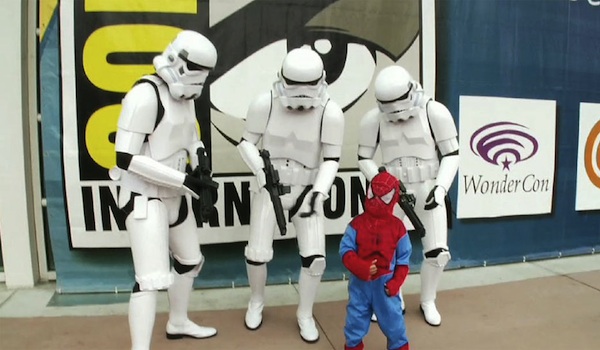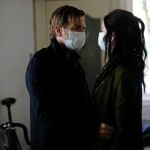Comic-Con Episode IV: A Fan’s Hope

Comic-Con Episode IV: A Fan’s Hope, the latest documentary from Super Size Me director Morgan Spurlock, opens with the titular convention’s founder expressing hope that 500 or so will attend the inaugural event.
Cut to hordes of costumed men and women frantically descending on San Diego. The entire history of Comic-Con would have made for a fascinating documentary. Spurlock, instead, covers this ground in about 30 seconds and focuses instead on a half-dozen or so convention-goers in 2010. It’s a move that could have resulted in something limp, or worse, mean-spirited. Thankfully, Spurlock treats his subjects with reverence, and they’re diverse enough that we feel invested in these very micro-level problems.
If you’re reading this, you are probably at least a little bit interested in comics, comic-book movies, or the “geek” culture. But odds are you’ve probably never constructed a giant animatronic Grunt from the Mass Effect games. Those are the individuals featured in this film. There are “The Geek” and “The Soldier” who are aspiring comic illustrators hoping to catch their big break at the convention. “The Designer” is an amateur costumer with her sights set on winning the Comic-Con Masquerade. “The Lovers”, meanwhile, met at the previous year’s convention, and the male is nervously working up the nerve to pop the question during a Kevin Smith panel.
Whatever you think of these people is almost irrelevant. Their stories, though heavily steeped in comics and video games, are universal. You can feel the pressure facing those hoping to make a big career move at this convention, not to mention the anxiety facing a young man about the propose marriage. There’s another storyline about a man who fights through a brutal crowd to nab a collectable action figure. Though you may not have ever wanted an 18-inch Galactus as much as this guy, everyone has at some point in his or her life, been him and wanted something—a toy, a concert ticket, whatever—that badly.
There’s one final storyline, probably the film’s lengthiest and most successful, that harkens back to what Comic-Con used to be all about—comics. “The Survivor” operates Mile High Comics, one of the country’s largest comic book retailers. But annual visits to San Diego aren’t nearly as profitable as they used to be. People there just aren’t that interested in actual comic books, so he’s elected to sell a book—Red Raven #1—that he thought he’d carry to his grave.
The scenes with The Survivor are surprisingly somber. They’ll make you feel a little guilty for following all the Hall H hoopla so closely. This used to be a weekend for him and others like him. Now, it belongs to whatever studio most needs to drum up buzz for its embarrassingly expensive blockbuster. Watching The Survivor and his colleagues sit around waiting for business to pick up brings this film down to earth and gives it more of a human element than you might expect.
Spurlock belongs to the Michael Moore school of “docu-tainment”—those who prefer being witty to being hit-hitting, and as a result, they ultimately inject themselves (and sometimes, their large egos) into their films. Spurlock is thankfully absent from the screen in “A Fan’s Hope”. His style, however, is not. He uses comic-style animations to transition between scenes, and he gives famous friends of his—Joss Whedon, Kevin Smith, Seth Rogen—ample time to wax poetic on their favorite Con-related childhood memories. These talking heads take away a little from the film’s rhythm, but their inclusion at least adds to the film’s ultimate message: Go ahead and obsess over comics, action figures, superheroes, and video games. You’re in good company.












